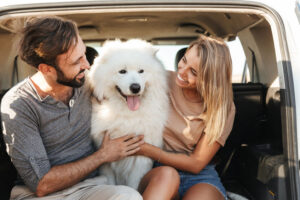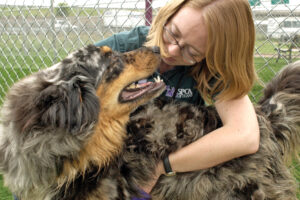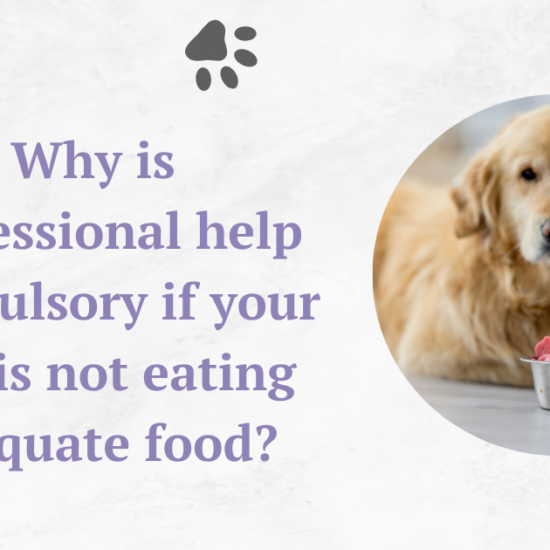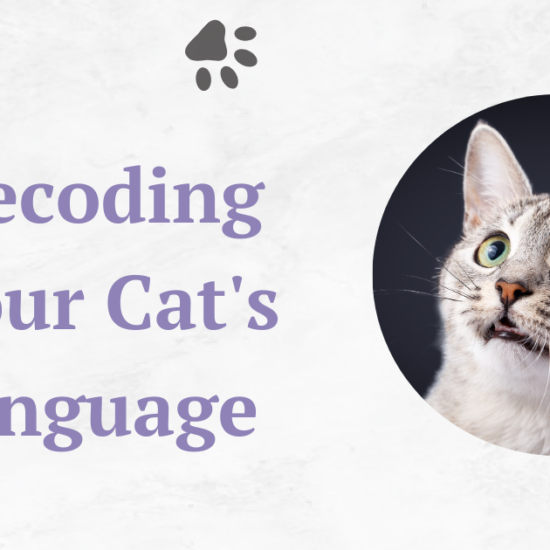Our pets are very important to us. Whether it’s a loyal dog that meets us with a wagging tail after a long day at work or a curious cat that curls up on our lap, these animals have their own way of touching our hearts. Even though we often give our pets human-like feelings, this makes us wonder: do animals feel emotions like we do? This article delves into the fascinating world of pets emotions.
Table of Contents
Introduction
It talks about the science behind animal feelings, the role emotions play in animal behavior, and what that means for our relationships with our furry friends.
The Science Behind Animal Feelings

Emotions are an important part of being human. They affect how we act, think, and relate to others. For a long time, most people thought that emotions were something that only humans could feel and that they were a result of our complex cognitive skills and language. But scientific studies have shown that animals feel emotions too, even though they do so in their own ways. In this piece, we’ll dive into the fascinating world of animal feelings, with a focus on our pets, and look at how science has helped us learn about their hidden emotions.
Animals Feel Emotions Too
Emotions are complex mental states that include what a person feels, how their body reacts, and how they act. People used to think that feelings were a natural part of being human, but this view has changed. Charles Darwin, who is famous for his ground-breaking work on evolution, laid the groundwork for knowing animal feelings. Darwin wrote in his book, “The Expression of the Emotions in Man and Animals,” that feelings are the result of evolution and are the same across species.
Darwin’s ideas were groundbreaking, but they also raised important questions. How can we tell what animals are feeling when they can’t talk like we can?
Understanding Pets Emotions
Animals can’t talk about how they feel, but they can show how they feel through a wide range of non-verbal signals. To figure out pets emotions, we need to pay close attention to their body language, facial expressions, sounds, and how they act in general.
Understanding Pets Emotions Through Body Language
Dogs

Happiness: A dog with a moving tail, a relaxed body position, and a playful attitude is often a happy dog.
Fear or Submission: A tucked tail, bowed ears, and a huddled position show that the animal is either afraid or giving up.
Excitement or Aggression: A raised hackle, a straight tail, and a leaning forward stance can be signs of excitement or aggression.
Cats

Contentment: It’s easy to tell when a cat is happy because they purr and rub their paws together.
Self-soothing: Cats may purr as a way to calm themselves down in stressful situations, like when they go to the vet.
Comfort and Confidence: Comfort and confidence can be seen in a cat’s body language. Most of the time, a relaxed, open stance with a straight tail shows comfort and confidence.
Facial Expressions: Studies have shown that some animals, like dogs and horses, have facial muscles that let them show how they feel with their faces. For example, a dog’s eyebrows may go up when it’s happy or down when it’s scared or worried. This tells us a lot about how they’re feeling.
Understanding Pets Emotions Through Vocalizations

Animals can show how they feel through the sounds they make. Dogs may bark excitedly when they’re happy, whimper when they’re scared, or growl when they feel threatened. On the other hand, cats might meow to get your attention or purr when they are happy and at ease.
Understanding Pets Emotions Through Contextual Behavior
It’s important to know the situation in which a pet acts in order to understand how they feel. For example, a dog that cowers when its owner raises a hand may not be showing guilt for something it did wrong in the past but rather fear or worry. Contextual clues help us figure out what our pets are feeling deep down.
The Neurobiology of Animal Feelings
To learn more about animal feelings, it is important to look into their brains and nervous systems. Neuroscientists have found that certain parts of an animal’s brain and chemical processes play a role in how they feel.
Amygdala: The amygdala is a small, almond-shaped structure deep in the brain. It is a key part of how both people and animals process their emotions. The amygdala is the part of a pet’s brain that helps it recognize threats and react to them. It also helps control emotional reactions. This very old part of the brain is central to experience of fear and anxiety, which shapes how people and animals act and behave in potentially dangerous situations.
Neurotransmitters: Neurotransmitters like serotonin and dopamine are very important for controlling an animal’s mood and feelings. Changes in the amounts of these neurotransmitters can have a big effect on animal feelings. For example, low serotonin levels in pets have been linked to behaviors like anxiety and sadness.
Mirror Neurons: Another interesting part of the neurobiology of animal feelings are mirror neurons. Scientists think that these neurons help animals feel empathy and bond with each other. When an animal’s mirror neurons fire, it means that it feels the same way as another animal. This lets them understand and feel what their friends are feeling. Mirror neurons give us a glimpse into our pets’ social and mental lives, showing how they can understand and connect with us.
In short, the science of animal feelings has helped us learn more about how pets think and feel. From Charles Darwin’s groundbreaking work to current neuroscience, we have learned that only humans can feel emotions. Through their body language, face expressions, sounds, and the way their brains work, our pets show us how they are feeling. When we understand and accept these feelings, we can build stronger bonds with our best friends and give them the care and understanding they need.
Untangling the Complexities of Pet Emotions
Just like people, our furry friends have a wide range of feelings. These feelings shape their personalities and how they connect with us. Now, we look at the wide range of animal feelings that pets, especially dogs and cats, possess.
Happiness and Joy in Dogs

When dogs are happy, it warms the hearts of both the animal and the person who lives with them. It’s often clear and endearingly shown by actions that are full of energy. Dogs are known for the way they show their happiness.
3 Signs of Happiness in Dogs

Tail Wagging: One of the most obvious signs that a dog is happy is a wagging tail, which can be anything from a gentle sway to a full-on whirlwind of joy.
Chasing or Jumping Around: This tail-wagging is often followed by other actions, like being playful, which can include jumping around, chasing toys, and playing happily with people or other pets.
Licking or Nuzzling:Dogs can also show how happy they are by being friendly with each other, such as by licking, nuzzling, and trying to get close. Anyone can feel better when they see a dog having fun, which shows how close people and their dogs are.
Worry and Fear in Pets

Pet owners love it when their pets are happy, but fear and anxiety can make both pets and their owners feel bad and worried. These feelings are often brought on by different things and can be shown in many ways.
3 Signs of Worry and Fear in Pets

Trembling: A scared pet may tremble or shake, usually in response to what it sees as a threat or a stressed situation.
Hiding: When pets are worried or scared, they often try to find places to hide, like under furniture or in a closet.
Trying to Get Away: When a pet is scared, it may try to get away from what is making it upset. This can include trying quickly to get out of a room or run away from something that seems dangerous.
The best thing you can do for your pet’s health is to figure out why they are scared or anxious and do something about it. Whether they’re scared of new places, loud noises like thunderstorms or fireworks, or traumatic events, it’s important to give them a safe and comfortable place to be.
Aggression

When pets get angry or aggressive, it’s usually because they think their safety or resources are in danger. Even though these feelings aren’t as common as happiness or fear, it’s important to know about them to fully understand pets emotions.
3 Signs of Aggression in Pets

Growling: When a dog feels scared or upset, it may growl as a warning.
Hissing: Cats often hiss when they are mad or feel like they are in a tight spot.
Baring Teeth: Dogs and cats that show their teeth are aggressive and are ready to defend themselves if they need to.
It’s important to know what makes pets act aggressively and, if necessary, to get help from a professional to deal with and handle these feelings safely. This could mean training, changing how pets act, or making changes to the environment to reduce possible sources of conflict.
Sadness and Grief
Grief is a feeling that often comes up when a loved one dies or when big tragedies happen in our lives. Pets can also have these complicated feelings, and when they are sad, they can show it in beautiful ways.
3 Signs Your Pet is Sad

Lethargy: When a pet is sad, it may become especially lazy and inactive and lose interest in things it used to enjoy.
Loss of Interest in Playing: Pets that like to play may lose interest in their favorite games and toys.
Changes in Appetite: When pets are upset, they may refuse to eat or eat less than usual.
It’s important to understand and acknowledge a pet’s grief, whether it’s from losing a friend or from a big change in their surroundings. During hard times, giving them extra comfort, attention, and a consistent pattern can help them get through it.
Envy and Jealousy
Jealousy and envy are complicated pet emotions, especially in homes with multiple pets that fight for attention, resources, or love.
2 Signs of Envy and Jealousy in Pets

Attention-Seeking Behaviors: A pet may act this way if it thinks that another pet is getting more love or attention.
Aggression Toward Rivals: Sometimes, jealousy can make a pet act aggressively toward someone it thinks of as a competitor, especially if the rival tries to take over the pet’s territory or resources.
Getting rid of jealousy and envy in pets usually means making sure each one gets enough care, love, and resources to cut down on competition and possible fights.
Love and Bonding
Love and bonding are two of the most touching things that pets can feel. These pet emotions are the basis for the close, mutually satisfying connections between pets and the people who care for them.
3 Ways in Which Pets Show Love

Affectionate Shows: Pets, especially cats, can show how much they love their owners by cuddling, purring, and rubbing them.
Licking and Nuzzling: Licking and nuzzling are signs of trust and respect that dogs use to show their love for each other.
Seeking Physical Closeness: Pets that are close to their owners may follow them around the house to be close to them and have company.
The ties between pets and the people who take care of them are very special. They are built on trust, affection, and shared experiences. These feelings make our lives better, just as they do for our pets.
In conclusion, pets emotions show how complicated their minds are. Pets have a wide range of feelings that affect how they act around us and the world around them. They can be very happy and show it, but they can also be afraid, angry, or jealous. Understanding and valuing these feelings strengthens our bond with our furry friends and makes their lives better.
Understanding the Importance of Animal Feelings
Pet emotions aren’t just vague ideas or fleeting feelings; they have a strong effect on how they act and interact, even in the animal world. Now, we look at how our pets’ feelings have a big impact on their behavior and how these feelings affect how they interact with their surroundings and with us, their human companions.
Role of Pet’s Emotions in Survival

Pets’ emotional reactions have deep roots in their need to survive. Fear and anger are important for their survival because they help them respond well to threats and protect themselves when they need to.
Fear: Fear is an instinctive feeling that makes pets pay attention to and react to possible risks. For example, a cat’s natural fear of heights keeps it from jumping from dangerously high places because it knows the risk. A pet’s feelings of fear also cause physical changes in the body, like a faster heartbeat and the release of stress hormones, which get the pet ready to deal with the threat.
Aggression: Aggression is a very important pet emotion as it is linked to survival. Aggression is a way for pets to protect themselves. When pets feel like their safety or resources are in danger, they may act aggressively by growling, hissing, or showing their teeth. This kind of violence scares off possible enemies, which helps keep them safe.
Responsible pet ownership requires that you understand and respect your pets’ feelings. It’s important to give pets a safe place to live that doesn’t have too many stresses or threats, so they can grow up without being too scared or angry.
Role of Pets’ Feelings in Socialization

Pet emotions are more than just survival instincts; they also include the formation of social ties that are important to both pets and the people who care for them. Pets’ feelings like love and attachment help them and their owners form strong bonds that make both of their lives better and build trust and teamwork.
Love and Attachment: Love and attachment are two of the most heartwarming feelings that pets can have. These pet feelings are the basis for the strong, long-lasting bonds between pets and the people who care for them. They do things like cuddle, purr, lick, and try to get close to you to show how they feel.
These emotional ties make life better for both pets and people by giving them a sense of security, companionship, and love. Because of the trust and unity that come from these ties, relationships are peaceful and satisfying.
Note: There might be affiliate links mentioned here. We may receive a commission if you purchase a product through an affiliate link. There is no additional charge for you. Please do your own research before making any online purchases.
Communication
Pets’ emotions are a strong way for them to communicate with us. Since they can’t talk about their wants and feelings like people do, pets use their body language to show what they want, how they feel, and what worries them.
Excitement and Playfulness: A dog’s wagging tail shows that it wants to play and connect. This bouncy behavior shows energy and a willingness to get involved.
Contentment: When a cat purrs softly, it means it is happy and at ease. It often happens when a cat feels safe and comfortable in its surroundings.
To communicate well with pets, you need to understand their emotional cues and react to them in the right way. It lets us meet their wants, comfort them when they’re worried or upset, and build a strong emotional connection with them.
Role of Pet’s Emotions in Learning and Memory

Pets’ feelings are a big part of how they learn and remember things. They remember both good and bad emotional events and that has a big effect on how they act in the future.
Positive Experiences: Pets are more likely to do the same thing again if it makes them feel good. For example, a dog that knows a certain park is a fun place to play will want to go back there.
Bad Experiences: On the other hand, pets also remember bad things. Traumatic or scary events can leave pets with lasting mental scars that make them avoid situations or places that make them feel bad.
This ability to learn and remember how to feel is useful for pet owners and teachers. Positive reinforcement techniques that produce happy and rewarding experiences can be used to shape desirable behaviors, while negative experiences should be kept to a minimum to prevent fear and anxiety.
Role of Pet’s Emotions in Problem Solving

Pets also use their emotional intelligence to figure out how to solve problems. They can handle hard tasks and challenges by using what they know about human feelings and cues.
Dogs: In particular, dogs are known for being able to understand how people feel. They can tell when their owners are sad or happy, and they change how they act to match. This emotional intelligence is useful for things like finding treats that are hidden or doing what they are told.
Cats: Cats are often thought to be more independent, but they can also solve problems. They might use what they know about their owner’s habits and feelings to tell them what they want or need.
In the end, pets’ emotional intelligence makes it possible for them to adapt to and react well to the human world. It makes them not only obedient but also sensitive to how their human families feel, which improves the quality of their relationships even more.
In conclusion, our pets’ emotions are not vague ideas; they are strong forces that affect their behavior, interactions, and relationships. Pet emotions are a big part of the lives of our furry friends, from survival traits like fear and aggression to the deep bonds of love and the subtleties of communication. Understanding and respecting these feelings are important parts of being a good pet owner because they make our pets’ lives better and strengthen the special bond we have with them.
The Ethical Implications of Pet Emotions
People and their pets have a special and treasured connection that is based on mutual love and understanding. As we learn more about our pets’ feelings, it brings up important ethical questions that we should think about as responsible caretakers of these sentient beings. In this discussion, we will look at what it means from an ethical point of view to recognize and care about pets’ mental lives.
7 Keys to Becoming a Responsible Pet Owner

When it comes to pets’ mental well-being, ethics is all about being a responsible pet owner. Recognizing that pets have many different feelings shows how important it is to meet both their physical and mental needs.
- Meeting Physical Needs: Being a responsible pet owner means making sure your pet has access to good food, clean water, a safe place to live, and medical care. These basic needs are important for their physical health and for living a happy, healthy life.
- Meeting Emotional Needs: It’s important to notice and meet pets’ emotional needs in addition to their physical needs. This means giving them opportunities to socialize as well as a safe place where they can feel safe and free from harm. Pets need to socialize to be happy, and ignoring their need for social contact can make them feel sad.
- Promoting Mental Health: Stress, worry, and even depression can occur in pets just like they can in people. Knowing how they feel makes us want to improve their mental health. This means giving them chances to play, do things that keep their minds active, and do things that fit their interests and personalities.
Recognizing the emotional side of having a pet supports a more whole-person approach to caregiving, making sure that pets have lives that are more than just about surviving.
- Avoiding Harm: Knowing that pets can feel fear and pain makes it even more important to avoid putting them through unnecessary stress. This idea applies to many different aspects of caring for and playing with pets.
- Responsible Methods of Training: The way we train our pets is very important to their mental health. Positive reinforcement methods, which reward good behavior instead of punishing bad behavior, are in line with social concerns. Pets can develop fear, anxiety, and anger when they are trained harshly or with punishment. This is not only bad for their mental health, but it can also make it hard for people to get along with their pets.
- Preventing Fear and Aggression: The best way to stop fear and aggression is to make sure pets feel safe and comfortable in their surroundings. This means avoiding events or things that can make your pet feel bad. For example, if we know that a dog is scared of thunderstorms, we might create a calm setting for them during storms, which will make them feel better.
- Pain Management: Part of being a good pet owner is taking care of physical pain or soreness right away. Seeing the signs of sickness or injury and getting them to a vet not only keeps them physically healthy but also keeps them from having to go through unnecessary pain.
3 Ethical Considerations in Research
When doing research on animals, ethics must come first, especially when it comes to knowing and caring about their emotional well-being. There should be ethical rules in place to make sure that animals are treated with respect and that their feelings are taken into account in research protocols.
- Animal Welfare: When doing scientific studies, it is very important to put the animals’ welfare first. This includes making sure they don’t feel too much pain or stress during the experiment. Ethical rules often say that invasive procedures should be avoided and that animal pain should be lessened as much as possible.
- Emotional Well-Being: Researchers must think about how the animals in their care feel emotionally. Ethically, it’s important to understand and reduce stressors that can affect emotional states, like being alone or uncomfortable. To make sure that study animals are emotionally healthy, they should have a good place to live, things to do, and time with other animals.
- Transparency and Accountability: Transparency and accountability are important for ethical research methods. Researchers should be open about their methods and results, and governing groups should make sure that rules are followed that put animals’ emotional health first. Researchers should also be held accountable for their deeds by making sure the public knows about them and looks closely at what they do.
4 Environmental Considerations
- Efforts to Save Nature: Understanding pet emotions is important for more than just keeping pets. It’s also important for saving wild animals. Understanding animal feelings, especially those of threatened animals, can teach us a lot about how to treat the natural world with respect.
- Protecting Environments: Protecting and restoring natural environments must be a top priority for conservation efforts. Realizing that animals have emotional ties to their environments makes it even more important for people to do as little as possible to disturb these places.
- Minimizing the Harm: Things that people do, like destroying habitats, polluting the environment, and poaching, can cause wildlife a lot of mental pain and suffering. Conservation should be based on moral principles that try to make sure that these actions have as little effect as possible on the emotional health of animals.
- Compassionate Conservation: The compassionate conservation model stresses how important it is to think about animal feelings. This method encourages ethical decision-making that puts the health of each animal first and tries to do as little harm as possible while still meeting conservation goals.
Understanding the inner lives of pets and animals in general encourages us to treat them with more kindness and respect. Being a responsible pet owner means taking care of their physical and emotional needs, keeping them safe, and making sure they are healthy. In ethical research methods, the well-being and mental health of the animals used in studies come first.
Realizing that animals feel emotions too makes it even more important to protect their environments and have as little harmful effect on them as possible. In the end, knowing that animals have feelings makes us more aware of our role as caretakers of the animal kingdom and makes us want to treat all animals, whether they are our beloved pets or creatures in the wild, with more empathy and compassion.
Improving Pets’ Emotional Lives

Our pets are more than just friends; we love and care for them like family. As caring pet owners, it’s our job to not only take care of their physical needs but also to help them feel good about themselves. Understanding and improving our furry friends’ mental lives is not only a sign of how much we love and care for them but also a way to make sure they are happy and fulfilled. Now, we will look at different ways to improve our pets’ emotional lives and their general health.
Understanding Their Needs
The most important thing we can do for our pets’ emotional well-being is to learn about their individual wants and preferences. Each pet is different and has its own likes, dislikes, and things that make it upset. Getting to know your pet well can make a huge difference in how happy and satisfied they are.
Knowing What They Like: Take the time to watch and talk to your pet to find out what they like. For instance, you might notice that your cat really likes a certain toy or that your dog’s eyes light up when you do a certain thing with them. With these tips, you’ll be able to give your pet more personalized and fun experiences.
Knowing Their Emotional Triggers: Just like people, pets have things that make them feel sad or angry. If you know what makes your pet happy, sad, or excited, you can build an environment that meets their emotional needs. For example, some cats may be scared of thunderstorms, while others don’t care. When things are stressful, you can ease and reassure them if you know how they’re feeling.
Socializing
Socializing pets is a key part of making their mental lives better, especially when they are young. It helps pets form strong emotional bonds with other animals and people, reduces fear and anxiety, and makes them more well-rounded and mentally healthy.
Early Socialization: Puppies and kittens need to meet other people and animals as soon as possible. It lets them meet different people, animals, and environments at an important time in their growth. This helps them grow up to be confident and happy.
Regular Interactions: Even when a pet is an adult, it needs to have regular interactions with other pets and people. It makes their relationships stronger, improves their ability to communicate with each other, and makes them less afraid of things or people they don’t know. Plan play dates, trips to the dog park, or visits with friends and family who also have pets to help them meet new people.
Stimulating the Mind
Just as pets need physical activity, they also need mental stimulation for their emotional health. Boredom can make pets act badly and hurt their feelings. By giving them things to think about, you keep their brains active and happy.
Interactive Toys: Spend money on interactive toys that help your pet think creatively and solve problems. Toys that need to be moved or puzzles that give out treats can keep them busy for hours.
Training Exercises: Doing training exercises is a great way to keep your pet’s mind active. Particularly, dogs love to learn new tricks and instructions. Training your pet regularly not only keeps their minds busy but also makes the bond between you and your pet stronger.
Enriched Environment: Add new activities, smells, and experiences to your home to make it more interesting. Rotating toys, giving cats places to climb, or setting up an indoor obstacle course for dogs can keep their minds active and keep them from getting bored.
Positive Reinforcement: Positive reinforcement is a way of teaching that focuses on giving rewards for good behavior instead of punishments for bad behavior. It works well not only for giving your pet commands but also for building trust and making your relationship with your pet stronger.
Rewards and Treats: Reward good behavior with treats, praise, and love. When your pet knows that what they do leads to good things, they are more likely to do those things again. This makes everyone happy and willing to work together.
Consistency and Patience: Consistency and patience are important for positive feedback to work. Be clear about what you want and expect from your pet, and give them a treat right away when they do what you ask. Don’t use punishment-based methods that can make pets afraid and anxious.
Training and Bonding: Training can be more than just giving orders; it can also be a chance to bond better with your pet. Working together builds trust and understanding between you and your pet. It’s a chance for you to learn about your pet’s attitude and likes while they learn from you.
In conclusion, making our pets’ emotional lives better is an ongoing task that takes understanding, work, and commitment. By paying attention to their individual wants and preferences, encouraging socialization, giving them mental stimulation, and using positive reinforcement, we can make sure that our beloved companions are happy and healthy. These things not only make the lives of our pets better, but they also make the connection between people and animals stronger, leading to a relationship based on trust, love, and happiness for both sides.
FAQs
Why is it important to study animals feelings?
Animals’ feelings are important to study because they challenge the long-held view that only humans can feel emotions. Understanding how animals feel helps us understand and care for them better. This makes our relationships with animals healthier.
Who laid the groundwork for figuring out animals’ feelings?
Charles Darwin’s great work on evolution made it possible to understand animals’ feelings. In his book, “The Expression of the Emotions in Man and Animals,” he argued that feelings are a result of evolution and that they are the same in all species.
How can we figure out pets’ emotions when they can’t talk to us?
Pets show how they feel through body language, facial expressions, vocalizations, and how they act in different situations. By paying attention to these signs, we can figure out how they feel.
What are some signs that a dog is happy?
A dog that is happy usually has a moving tail, a relaxed body, and a playful attitude. They may also play with joy, have a tail that stands up straight, and lean forward.
How do cats show they are happy?
When cats are happy, they often purr, which is often accompanied by a relaxed body and rubbing paws. Cats are usually comfortable and sure of themselves when they stand with their backs open and their tails up.
How do dogs and cats show how they feel with their faces?
Research has shown that animals like dogs and horses have facial muscles that let them show how they feel through their movements. For example, a dog’s eyebrows may go up when it’s happy, but they may go down when it’s scared or worried. Cats can also show how they feel by the way they move their faces.
What does the amygdala have to do with pet feelings?
The amygdala is a small part of the brain that helps both people and animals understand their feelings. The amygdala is in charge of detecting and reacting to threats, controlling emotional responses, and shaping behaviors and reactions in potentially dangerous situations in pets.
How do dogs’ mirror neurons help them connect with other’s feelings?
Pets’ mirror neurons help them feel love and connection with others. When these neurons fire, it means that an animal is feeling emotionally connected to another animal. This lets them understand and share their feelings with their friends.
How can understanding your pets’ feelings help you get along better with them?
When people understand their pet feelings, they can better meet their wants and needs. This builds trust and improves the emotional bond between people and their pets, leading to relationships that are more satisfying and peaceful.
How does the fact that animals feel emotions have anything to do with ethics?
Knowing that animals feel emotions has ethical implications for caring for pets, conducting research ethically, and protecting wildlife. It talks about how important it is to meet pets’ emotional needs, not hurt them, think about their emotional well-being during research, and support conservation efforts that are kind.
Conclusion
The world of animal feelings is complicated and interesting. Science has shown that our furry friends can feel many different emotions, from happiness and love to fear and sadness. Understanding these feelings not only helps us connect with our pets better, but it also makes us morally responsible for their well-being.
As responsible pet owners, it’s our job to take care of our pets’ mental needs as well as their physical ones. By understanding and following their feelings, we can give our four-legged family members a happy and peaceful life, which will make the bond between us and them stronger. In the end, our pets give us unconditional love and friendship, and it’s our honor to give back by recognizing and caring for their mental lives.












